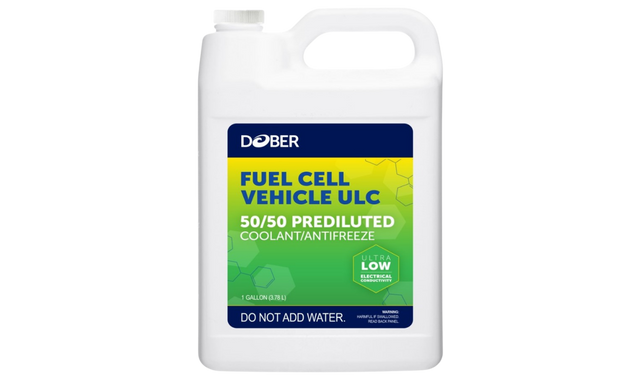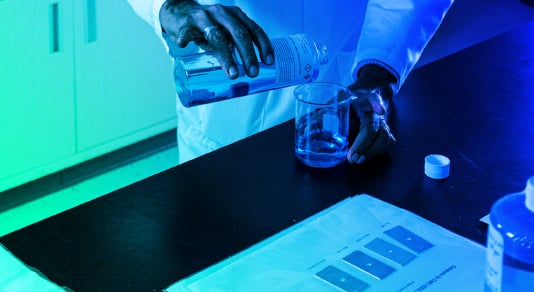electrolyzer coolants
electrolyzers can do it all — they need a coolant that can do it all, too.
Electrolyzers for hydrogen production are a key piece of the world's green energy future. According to McKinsey, green hydrogen is expected to account for 28% of power demand by 2050.
Much of the discussion around hydrogen power focuses on its automotive application, particularly in long-haul trucks.
However, electrolyzers — namely, alkaline, polymer electrolyte membrane and solid oxide — have a wide range of end use cases. Those can include:
- Renewable power storage
- Power for industrial facilities (e.g., a steel plant)
- Decentralized power generation
What do electrolyzers need to keep operating effectively? Thermal management or, in other words, coolant.
.png?width=500&height=333&name=Electrolyzer%20NonAuto%20Page%20Outline%20(600%20%C3%97%20400%20px).png)
While not the same as the fuel cell system, electrolyzers do also require thermal management to keep them in tip-top shape. In terms of ideal operating temperatures:
- Alkaline electrolyzers, for example, typically operate at <100 degrees Celsius.
- PEM electrolyzers operate best at 70-90 degrees Celsius.
- Solid oxide electrolyzers, meanwhile, which are not as commercially abundant as the aforementioned, operate at temperatures of 700-800 degrees Celsius.
In other words, electrolyzers for hydrogen production need a robust coolant, whether the hydrogen is for automotive purposes or not. Dober's Ultra Low Conductivity coolant is compatible with both fuel cell and electrolyzer applications.
So why does an electrolyzer need a robust coolant?
Two words: thermal management. While that sounds simply put, there's a lot that goes into it.
electrolyzers are expensive: what happens if not treated with an effective coolant?
You might already know what can happen to a battery electric vehicle or fuel cell vehicle when its coolant fails (or if the proper coolant isn't used in the first place): battery degradation, corrosion, decreased efficiency and even hazardous driving conditions (e.g., engine fires).
But what about the impact of a faulty coolant in an electrolyzer for hydrogen production?
While the catalysts and processes are different, many of the negative impacts can be the same. Without a proper coolant, an electrolyzer faces:
- Electrolyzer cell/stack degradation
- Lower efficiency
- Ebullition of electrolyte¹
- Potential safety issues
Research continues in a number of areas, including how to utilize excess heat from electrolyzers for alternative applications and material durability (i.e., materials able to withstand higher temperatures). However, for now, it can be stated that no matter which electrolyzer type you may consider, it will require cooling and temperature optimization.
¹Grigoriev et al. "Alkaline Electrolysers." Comprehensive Renewable Energy, Vol. 4, 2022: 459-472. https://www.sciencedirect.com/science/article/pii/B9780128197271000248.
electrolyzer use is projected to skyrocket
There will be a major need for electrolyzers in the coming years. Just take a look at the International Energy Agency's totals for current installed electrolyzer capacity and projected capacity in the coming decades up to the Net-Zero Emissions by 2050 scenario.
According to the IEA projections, electrolyzer capacity is set to grow by well over 600 times in the coming decades from current levels.

What does that mean? There will be a significant increase in electrolyzer capacity and, in turn, a significant need in coolant for thermal management in those electrolyzers.
A world of hydrogren possibilities
renewable energy storage
Electrolyzers can be used for hydrogen production that can power something at a later date. In other words: energy storage.
decentralized energy production
With modular electrolyzer stacks, hydrogen production can be achieved anywhere — energy can be created and delivered irrespective of location.
power to plants
Hydrogen from electrolyzers can also be used directly at key industrial operations, like steel, cement or fertilizer plants, to name a few.
A coolant to help power the hydrogen revolution
Without thermal management, electrolyzers will break down and not be able to serve their intended function: producing hydrogen to power our future.
Dober has formulated a coolant that is compatible with both fuel cell and electrolyzer applications. Both applications require ultra-low electrical conductivity levels of their coolant.
Want to learn more? Reach out to the Dober Performance Fluids team to learn more about how our coolants will play a vital role in the world's green-energy future.

.png?width=500&height=281&name=8%20Coolant%20Additive%20Blending%20locations%20(1).png)
Global support
Dober has over 3,000 customers and ships to over 40 countries. In addition, Dober has eight blending sites around the world.
Geography is no barrier to us: wherever you are, we can help.
we'd love to work with you
The Dober team is on the cutting edge of innovation in the performance fluids space.
Have a question for our dedicated performance fluids team? Do you have a particular pain point you'd like to address and want to learn more about our electrolyzer coolants?
Don't hesitate to reach out — a Dober representative will get back to you.



